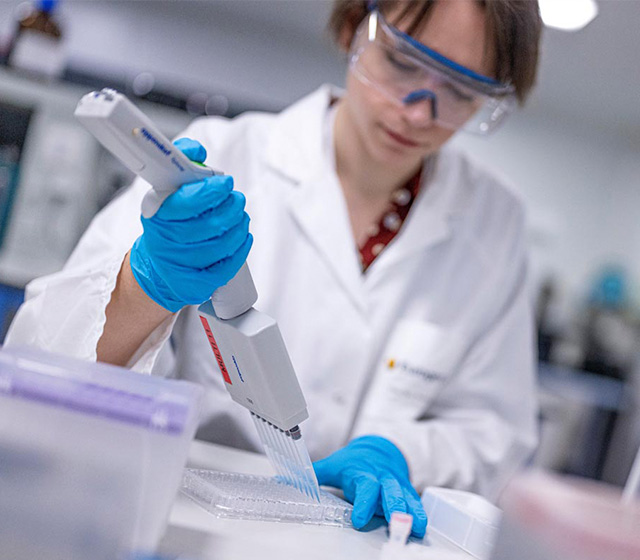Epigenetics
PTM and Gene expression
Chromatin exists either as the transcriptionally active euchromatin or as the transcriptionally repressed heterochromatin state.1
Post-translational modifications of histone "tails" (amino termini) have been implicated in the conversion between the two states. 1-2
Covalent modifications, such as acetylation, methylation and phosphorylation affect chromatin structure and exquisitely regulate gene expression.3-6
Histone hyperacetylation is correlated with increased transcription, whereas hypoacetylation correlates with transcriptional repression.5
In Histone H3, preferential methylation sites have been shown to be Lys4, Lys9, Lys27 and Lys36, with methylation generally leading to transcriptional suppression.3,7 Methylation of specific arginine residues in H3 has been shown to correlate with cell fate and potency.8 Phosphorylation at Ser10 (pSer10) is implicated in both transcription and cell division.9
References
- 1. Grunstein, M. et al. J. Cell Sci. Suppl. 19, 29 (1995).
- 2. Strahl, BR and CD Allis, Nature 403, 41 (2000)
- 3. Strahl, BD. et al. Proc. Natl. Acad. Sci. 96, 14967 (1999)
- 4. Jenuwein, T. and CD. Allis Science 293, 1074 (2001)
- 5. Sterner, DE. et al. Microbiol. Mol. Biol. Rev. 64, 435 (2000)
- 6. Lachner, M. et al. J. Cell Sci. 116, 2117 (2003)
- 7. Nishioka, K. et al. Genes & Dev. 16, 479 (2002)
- 8. Torres-Padilla, M-E. et al. Nature 445, 214 (2007)
- 9. Prigent, C. and S. Dimitrov, J. Cell Sci. 116, 3677 (2003)
The Histone code
The histone code is a hypothesis where chromatin-DNA interactions are guided by combinations of histone modifications. This code is potentially extremely complex, as the four histones H1 to H4 can be simultaneously modified at multiple amino acids with different modifications.
Methylation can take place on Lys and Arg, acetylation on Lys, and phosphorylation on Thr, Ser and Tyr.
Histones all contain a large percentage of these 5 amino acids, so combinations are multiple. A well-known example is the concerted phosphorylation of Ser10 and acetylation of Lys14 on histone H3, which is correlated with gene transcription. Analyzing the PTMs individually and in combination proves useful in deciphering this histone code.
